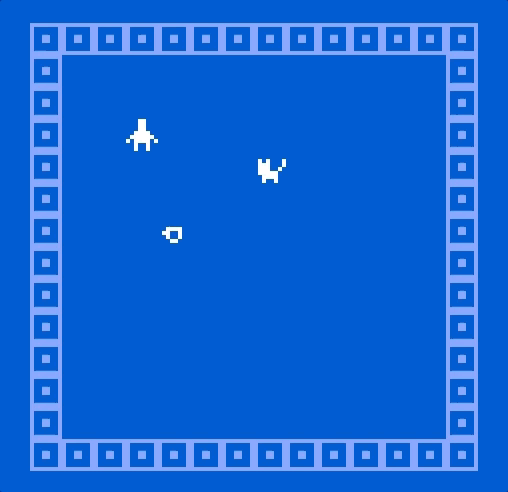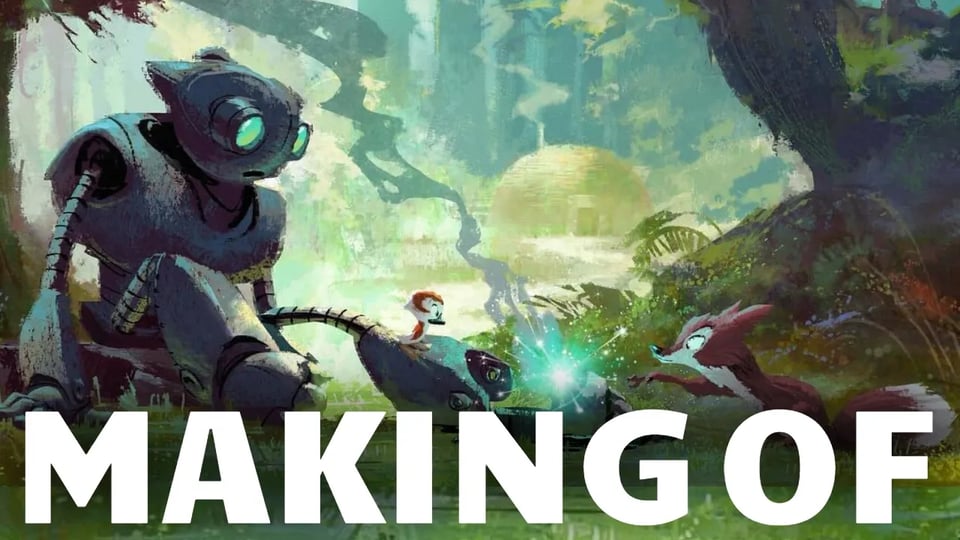Hey there, Happy Mario Day!
Today is March 10th (Mar10), and for videogame geeks like me, it’s the perfect day to celebrate everyone’s favorite plumber. Super Mario Bros. on the NES was my first-ever console game, and I've played (and loved) pretty much every Mario game since. Nintendo is a huge part of why I chose my career path, and I’m genuinely grateful for all the joy their games have brought me over the years.
I've spent the last couple of weeks deep inside my JavaScript game library - trying to create something that's both fun and intuitive for making games. Building games with it helps me find all those hidden pain points, and honestly, I’m having a great time!
If you follow me on BlueSky, you might have already spotted some sneak peeks. So far, I’ve made a Sokoban-style block-pushing puzzle game, a Tetris clone, and a small adventure game. Each explores something a bit different, and they’ll all be free to play once the site goes live.
Anyway, that's enough about me—let's jump into this week's creative sparks!
Bitsy - A Miniature Game Maker for People Who Can’t Code
I mentioned Pocket Platformer in issue 2, an easy-to-use tool for making platform games. In this issue, I want to introduce Bitsy. Like Pocket Platformer, Bitsy is minimalistic, but it's specifically designed for creating small, narrative-driven adventure games. It’s perfect for beginners wanting a friendly introduction to game development and storytelling - and it’s genuinely fun to use.
Bitsy is a web-based game maker where you visually design rooms, add items, and set up simple interactions. Its retro, pixelated style encourages creativity, helping you quickly tell interactive stories or craft charming puzzles with ease.

Bitsy creations are easy to share online, and there’s an active community of creators eager to support each other. You'll find plenty of helpful tools and resources on the official Bitsy site, along with countless games on itch.io to spark your inspiration. Bitsy game jams are also held regularly, providing fantastic opportunities to showcase your work.
If you're new to game jams, they’re friendly competitions (usually more about creativity than prizes) where participants create a game within a limited timeframe based on a shared theme. Joining a jam is a fantastic way to get inspired, push your creative boundaries, and connect with fellow creators.
Making of The Wild Robot

I really miss the days of DVD extras, so videos like this always fascinate me. YouTube partly fills the void left by the decline of physical media, but it’s not quite the same. Getting a behind-the-scenes glimpse at how things are made can be incredibly inspiring and a fantastic learning experience.
I haven't had a chance to see The Wild Robot yet, but it's on my watchlist. My son recently finished reading all the books and absolutely loved them, so I’m excited for us to watch it together soon.
One thing I particularly like about The Wild Robot and something highlighted in this video - is the shift toward stylized visuals instead of hyper-realism. In 3D art, this approach is known as Non-Photorealistic Rendering (NPR), and I'm really pleased that it's becoming more mainstream. It feels like animated movies are maturing and finding their own unique styles. Recent examples include Spider-Man: Across the Spider-Verse, Puss in Boots: The Last Wish, and Teenage Mutant Ninja Turtles: Mutant Mayhem, and in my opinion, they're all the better for it!
Watch the Making of the Wild Robot 👉
Sparked Discoveries
Here's a handful of links I found intriguing recently:
Making Software
This one's partly a bookmark for myself, but it’s too good not to share. If the final book is even half as impressive as its promotional website, we're in for a treat. Making Software describes itself as “a reference manual for people who design and build software.” But beyond being a practical resource, it also promises a fascinating exploration of how software (and hardware) actually work, illustrated with beautiful animations. I'm genuinely excited to see how it turns out!
The making of HTML for People
In the last issue, I mentioned the website HTML for People, and for some reason, I thought it had been around much longer. Turns out, it only launched last year! This article explains how and why the site came about, and I still think it’s an excellent resource for anyone new to HTML and building their first website. For anyone interested in computers or coding, it’s a perfect place to start—setting a solid foundation for exploring more advanced programming languages down the road.
The Uncomfortable
This is a collection of deliberately uncomfortable everyday objects. As a designer, I usually aim for usability—but there's something strangely appealing about these bizarre, impractical items, carefully designed to be completely unusable. It's an amusing collection that's definitely worth a look!
Have you found anything interesting lately? I’d love to hear about it, just reply to this email!
Until next time,
Ben
You just read issue #45 of Ninja Sparks. You can also browse the full archives of this newsletter.
